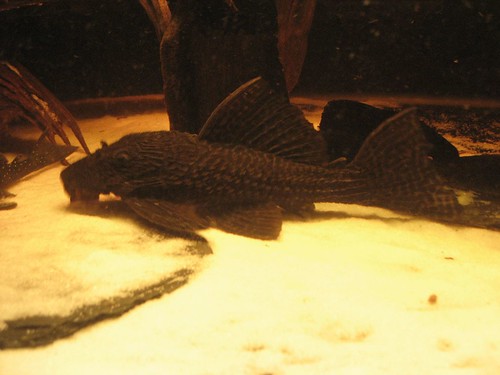L190 Royal Pleco Profile
Family: Loricariidae
Common Name : Red Eyed Royal Pleco
Maximum Length : 50cm / 9"
Origin : Rio Pucuno, Ecuador
pH Level : 6.0 - 7.0
 Things to note: Royals are consistent in one thing: they defecate a lot, and will be a huge tax on the filtration system. Always overfiltrate when keeping Panaque because of their wood eating nature.
Things to note: Royals are consistent in one thing: they defecate a lot, and will be a huge tax on the filtration system. Always overfiltrate when keeping Panaque because of their wood eating nature.Personal comments : I have refrained from specializing in Panaques especially because they are prone to the Panaque disease, which wipes out entire tanks of Royals in a very short span of time. That said, my Royal has been in my tank for quite a while and is still doing well.
Tips : Choose a good piece with straight lines, and avoid stressing out the fish or keeping it in a tank too small for its growth.
......................................................................................
Sexual dimporphism / reproduction : The fish has been spawned in captivity using some form of tube in a large tank (approx. 125 US Gallons). A false dry season of two weeks (low, warm, still water) was used. Then the tank was topped off with cooler rainwater (refilling about 80%). Lots of meaty and veggie foods were offered. The pair spawned within days. Of course size would be the biggest stumbling block.
Feeding : This suckermouth catfish is a wood-eater. Mostly vegetarian diet.
Behavior in captivity : It is mostly hiding, but comes out readily to feed. Territorial with conspecifics and other similarly sized catfish although otherwise peaceful with smaller fish. More write ups on PCF here.


















